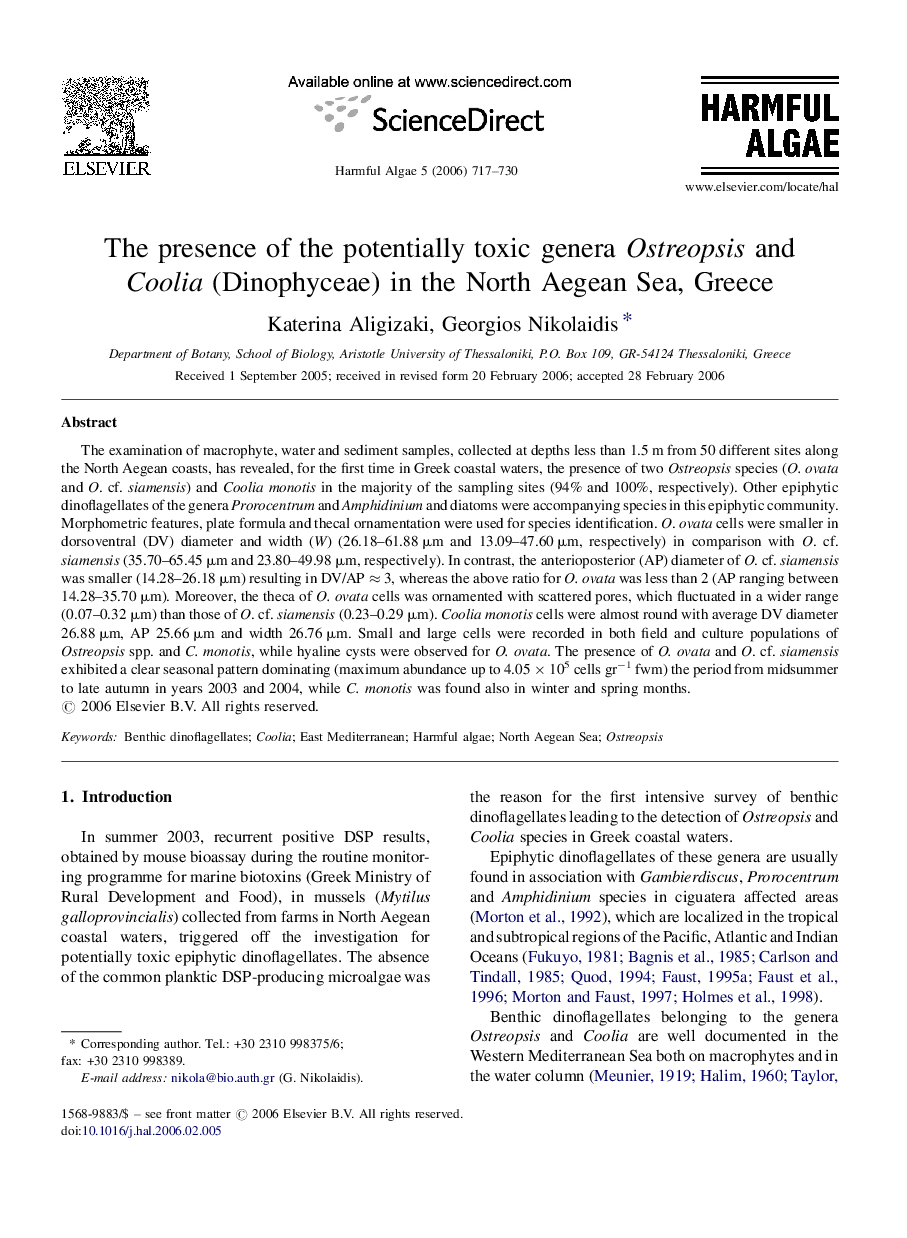| کد مقاله | کد نشریه | سال انتشار | مقاله انگلیسی | نسخه تمام متن |
|---|---|---|---|---|
| 4546279 | 1327503 | 2006 | 14 صفحه PDF | دانلود رایگان |
عنوان انگلیسی مقاله ISI
The presence of the potentially toxic genera Ostreopsis and Coolia (Dinophyceae) in the North Aegean Sea, Greece
دانلود مقاله + سفارش ترجمه
دانلود مقاله ISI انگلیسی
رایگان برای ایرانیان
کلمات کلیدی
موضوعات مرتبط
علوم زیستی و بیوفناوری
علوم کشاورزی و بیولوژیک
علوم آبزیان
پیش نمایش صفحه اول مقاله

چکیده انگلیسی
The examination of macrophyte, water and sediment samples, collected at depths less than 1.5 m from 50 different sites along the North Aegean coasts, has revealed, for the first time in Greek coastal waters, the presence of two Ostreopsis species (O. ovata and O. cf. siamensis) and Coolia monotis in the majority of the sampling sites (94% and 100%, respectively). Other epiphytic dinoflagellates of the genera Prorocentrum and Amphidinium and diatoms were accompanying species in this epiphytic community. Morphometric features, plate formula and thecal ornamentation were used for species identification. O. ovata cells were smaller in dorsoventral (DV) diameter and width (W) (26.18-61.88 μm and 13.09-47.60 μm, respectively) in comparison with O. cf. siamensis (35.70-65.45 μm and 23.80-49.98 μm, respectively). In contrast, the anterioposterior (AP) diameter of O. cf. siamensis was smaller (14.28-26.18 μm) resulting in DV/AP â 3, whereas the above ratio for O. ovata was less than 2 (AP ranging between 14.28-35.70 μm). Moreover, the theca of O. ovata cells was ornamented with scattered pores, which fluctuated in a wider range (0.07-0.32 μm) than those of O. cf. siamensis (0.23-0.29 μm). Coolia monotis cells were almost round with average DV diameter 26.88 μm, AP 25.66 μm and width 26.76 μm. Small and large cells were recorded in both field and culture populations of Ostreopsis spp. and C. monotis, while hyaline cysts were observed for O. ovata. The presence of O. ovata and O. cf. siamensis exhibited a clear seasonal pattern dominating (maximum abundance up to 4.05 Ã 105 cells grâ1 fwm) the period from midsummer to late autumn in years 2003 and 2004, while C. monotis was found also in winter and spring months.
ناشر
Database: Elsevier - ScienceDirect (ساینس دایرکت)
Journal: Harmful Algae - Volume 5, Issue 6, December 2006, Pages 717-730
Journal: Harmful Algae - Volume 5, Issue 6, December 2006, Pages 717-730
نویسندگان
Katerina Aligizaki, Georgios Nikolaidis,